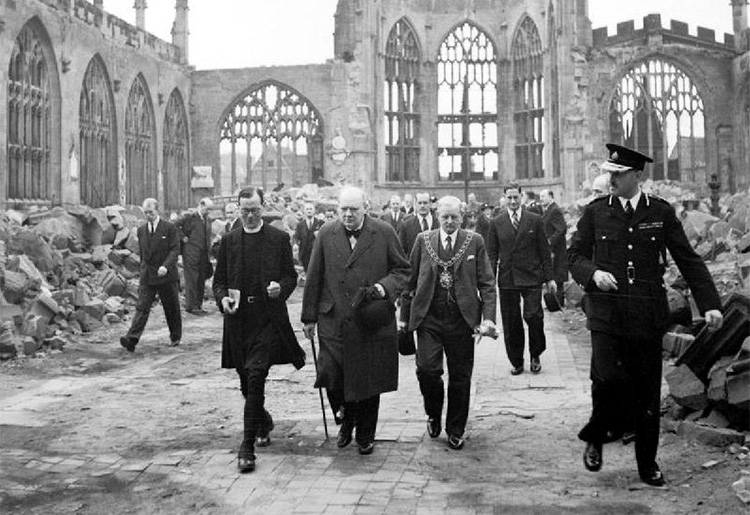
During the summer and early autumn of 1940, after the evacuation of British forces from Dunkirk and the Fall of France, Germany prepared for an invasion of Britain.
The German Air Force, known as the Luftwaffe, mounted an attack aiming to overcome the British Royal Air Force (RAF) and force Britain to negotiate a peace settlement. Yet the Germans underestimated the strategy and resilience of Britains both in the air and on the ground.
During the Battle of Britain, now-iconic Spitfires and Hurricanes took to the skies from British airfields to defend the south-east coast. RAF Duxford was one such airfield, where the historic air craft took flight once again on 10 and 11 September 2022 at Duxford’s Battle of Britain Air Show.
Britain’s ultimate victory in the skies stopped a German invasion, signifying a turning point in World War Two. Here are 8 facts about the battle that saved Britain.
1. The battle was part of a longer-term invasion plan by the Nazis
Codenamed Operation ‘Sealion’, Hitler ordered planning to begin for an invasion of Britain on 2 July 1940. He had expected Britain to seek a peace settlement after Germany’s defeat of France in June, but Britain was determined to continue fighting.
For the invasion to have any chance of success, the Nazi leader recognised the need for German air and naval superiority over the English Channel. A sustained air attack on Britain would open the door for full invasion.

German Heinkel He 111 bombers over the English Channel, 1940
Image Credit: Bundesarchiv, Bild 141-0678 / CC-BY-SA 3.0, CC BY-SA 3.0 DE
2. The RAF were outnumbered
Britain’s RAF had around 1,960 aircraft at its disposal in July 1940, including some 900 fighter aircraft, 560 bombers and 500 coastal aeroplanes. The Spitfire fighter became the star of the RAF’s fleet during the Battle of Britain – though the Hawker Hurricane actually took down more German aircraft.
However, the Luftwaffe could deploy 1,029 fighter aircraft, 998 bombers, 261 dive-bombers, 151 reconnaissance planes and 80 coastal planes. In fact, their capacity was so huge, that later in the Battle, the Luftwaffe launched around 1,000 aircraft in one single attack.
By early September, Germany had shifted its focus from RAF targets towards London and other industrial cities. This marked the beginning of a bombing campaign known as ‘the Blitz’. On the campaign’s first day, nearly 1,000 German aircraft took part in mass raids on the English capital.
3. The British had developed an air defence network that gave them a critical advantage
The chief architect of Britain’s strategy was Air Marshal Hugh Dowding, who had established RAF Fighter Command in July 1936. In an effort to strengthen the RAF by improving communication between radars, observers and aircraft, Dowding suggested a set of reporting chains.
The ‘Dowding System’ organised Britain into four geographical areas called ‘Groups’, further divided into sectors. The main fighter airfield in each sector had an operations room which directed the fighters into combat.
Sector Stations received updated information as it became available and continued directing airborne fighters by radio. The operations rooms also directed other elements of the defence network, including anti-aircraft guns.
Fighter Command could therefore manage its valuable and limited resources, and spread accurate information quickly.
4. The battle began on 10 July 1940
Germany had begun carrying out daylight bombing raids on Britain on the first day of the month, but from 10 July the attacks intensified. In the initial stage of the battle, Germany focused their raids on southern ports and British shipping operations in the English Channel.
5. Germany launched its main offensive on 13 August
The Luftwaffe moved inland from this point, focusing its attacks on RAF airfields and communication centres. These attacks intensified during the last week of August and the first week of September, by which point Germany believed the RAF to be nearing breaking point.
6. One of Churchill’s most famous speeches was about the Battle of Britain
As Britain braced for German invasion, Prime Minister Winston Churchill made a speech to the House of Commons on 20 August uttering the memorable line: “Never in the field of human conflict was so much owed by so many to so few”.
The British pilots who took part in the Battle of Britain have since been referred to as “The Few”. However, the RAF was supported by a huge ground crew. Riggers, fitters, armourers, and repair and maintenance engineers looked after the aircraft, while factory workers kept aircraft production up.
The tens of thousands of volunteers comprising the Observer Corps tracked incoming raids, ensuring that the 1,000 observation posts were continuously manned. Anti-aircraft gunners, searchlight operators and barrage balloon crews all played vital roles in Britain’s defence.

Churchill walks through the ruins of Coventry Cathedral with J A Moseley, M H Haigh, A R Grindlay and others, 1941
Image Credit: Public Domain, via Wikimedia Commons
Members of the Women’s Auxiliary Air Force (WAAF) served as radar operators or worked as plotters, tracking raids in operations rooms. Set up in May 1940, the Local Defence Volunteers (later known as the Home Guard) was a ‘last line of defence’ against German invasion. By July, some 1.5 million men had enrolled.
7. Not all the RAF pilots were British
Almost 3,000 RAF men took part in the Battle of Britain. While most of them were British, Fighter Command was an international force.
Men came from across the Commonwealth and occupied Europe: from New Zealand, Australia, Canada, South Africa, Rhodesia (now Zimbabwe) to Belgium, France, Poland and Czechoslovakia. There were even pilots from the neutral United States and Ireland.
The War Cabinet created two Polish fighter squadrons, Nos. 302 and 303, in the summer of 1940. These were swiftly followed by other national units. No. 303 entered battle on 31 August, at the battle’s peak, and quickly became Fighter Command’s highest claiming squadron with 126 kills.
8. The Battle of Britain was a decisive yet defensive victory for Britain
By 31 October, the battle is generally considered to have ended.
The RAF’s Fighter Command had suffered its worst day of the battle on 31 August amid a large German operation, with 39 aircraft shot down and 14 pilots killed. In total, the Allies had lost 1,547 aircraft and suffered 966 casualties, including 522 deaths.
The Luftwaffe’s lack of heavy bombers, supply problems and failure to identify critically important targets made invasion all but impossible. The Axis casualties, who were mostly German, included 1,887 aircraft and 4,303 aircrew, of whom 3,336 died.
Victory in the Battle of Britain did not win the war, but it made winning a possibility in the future.














